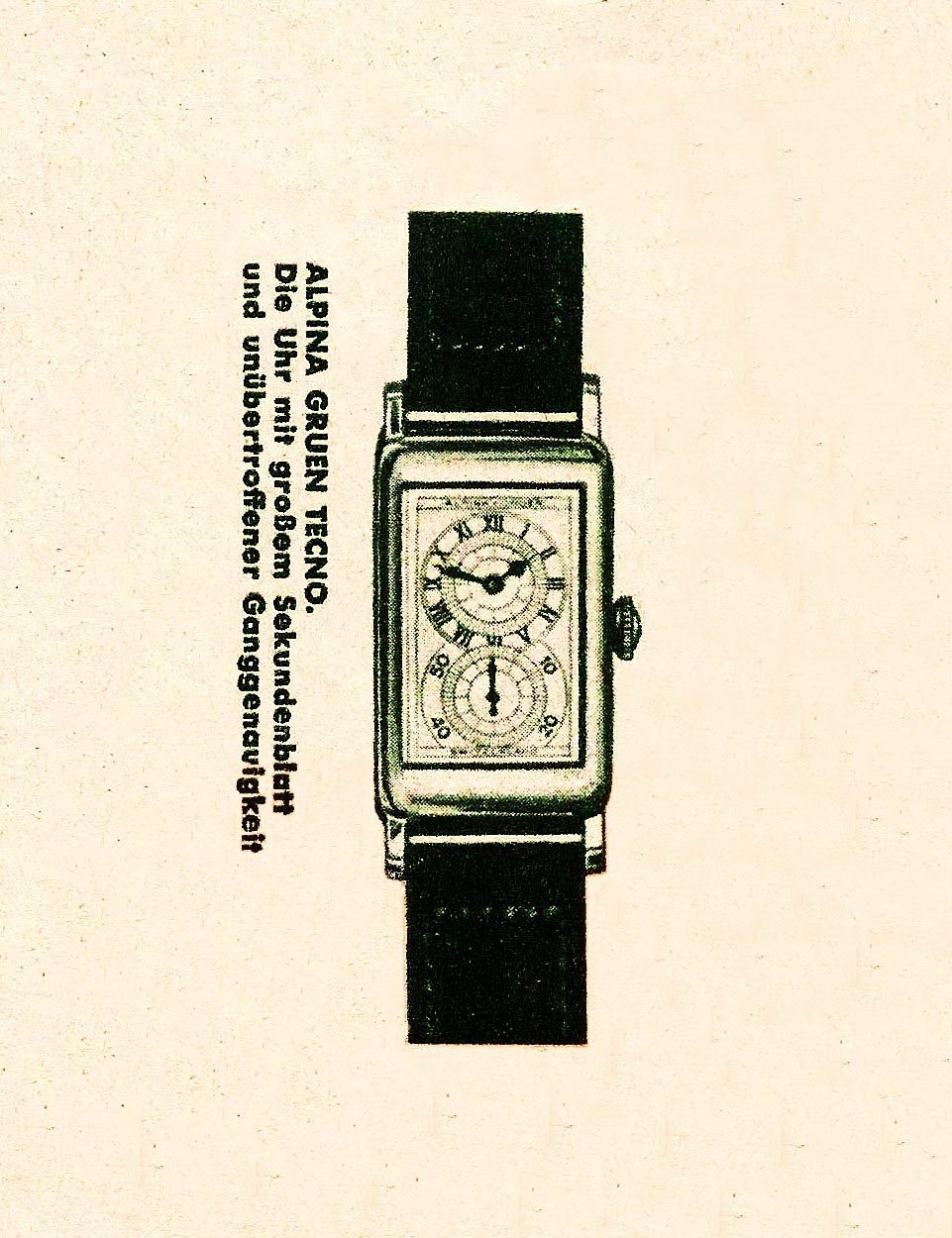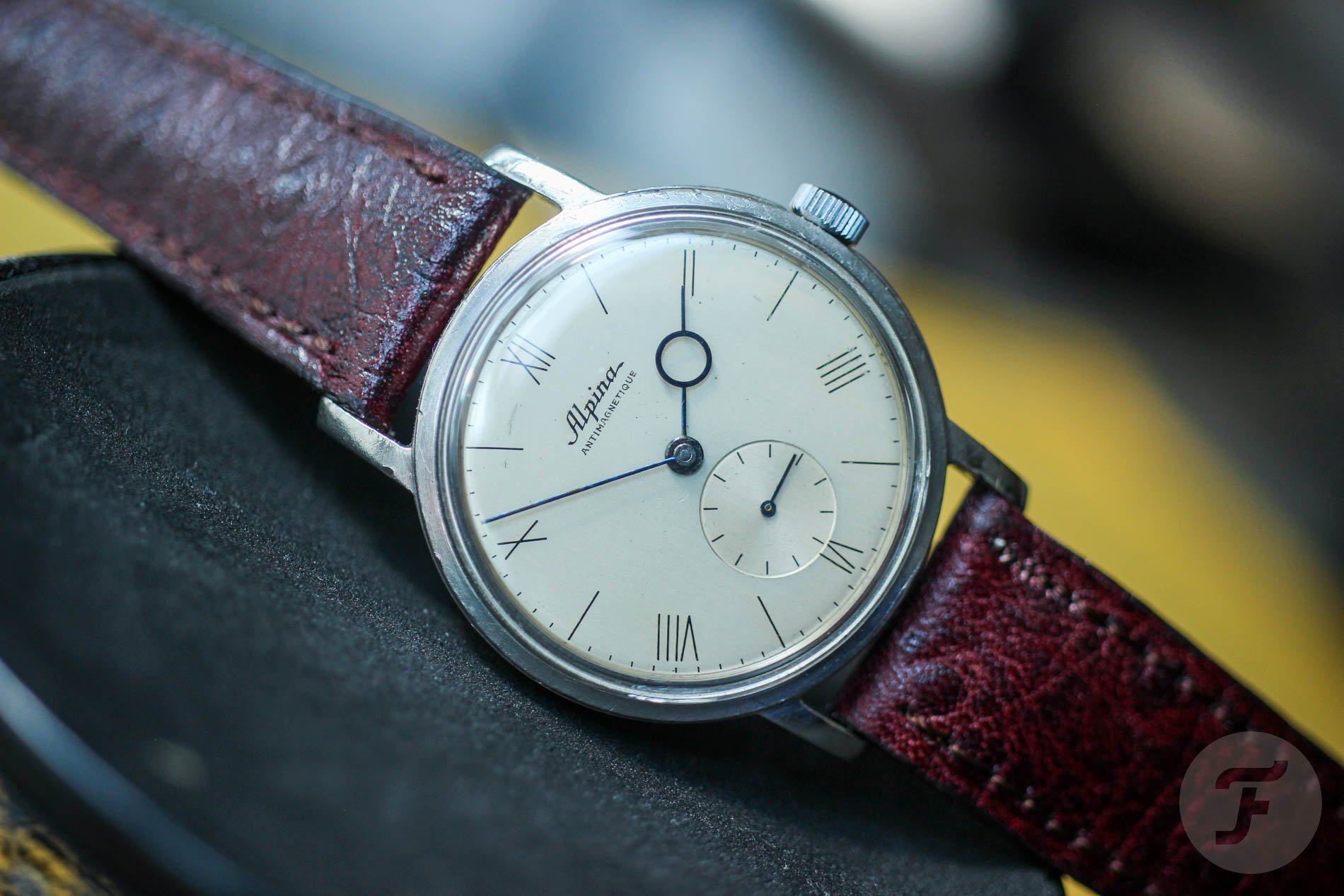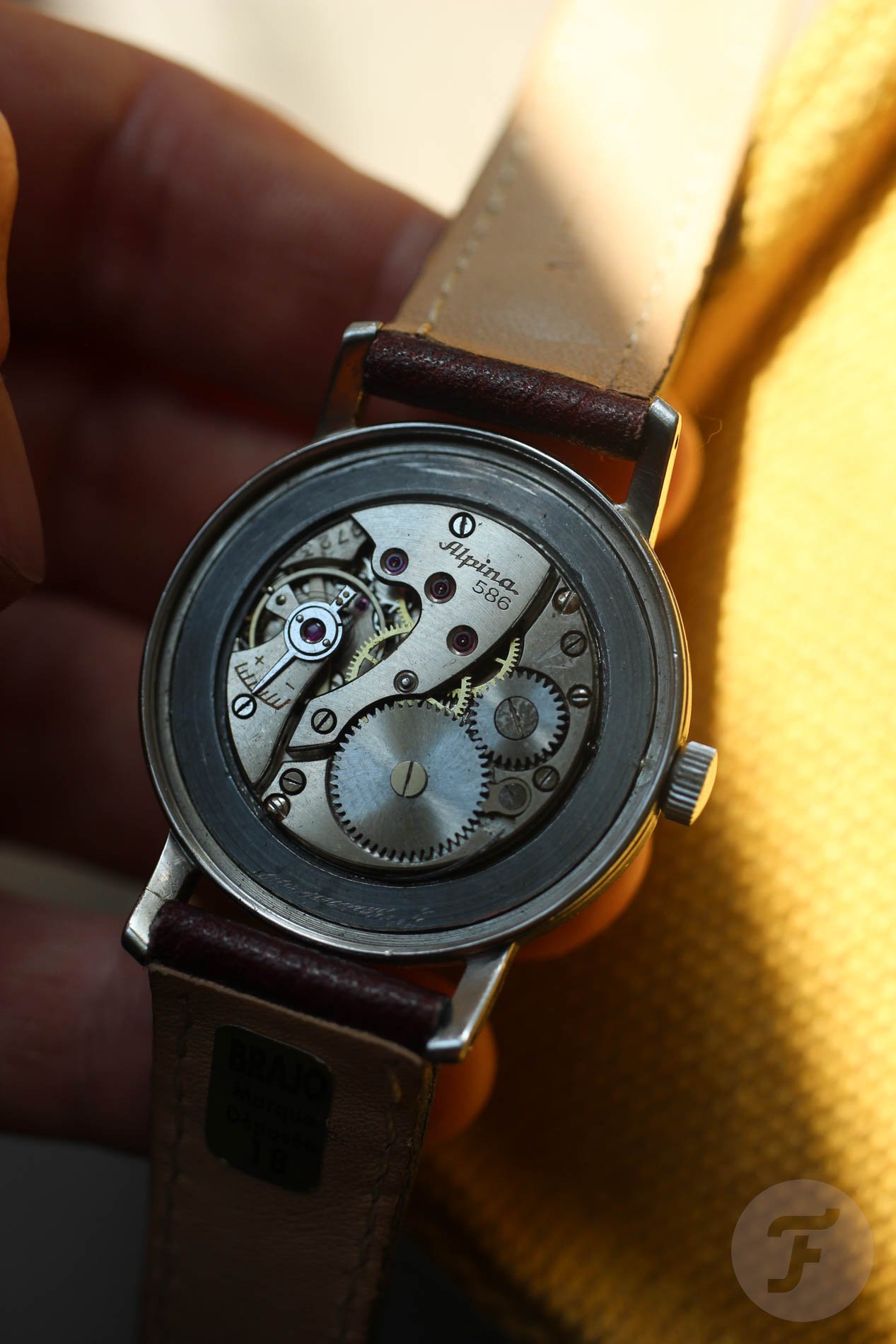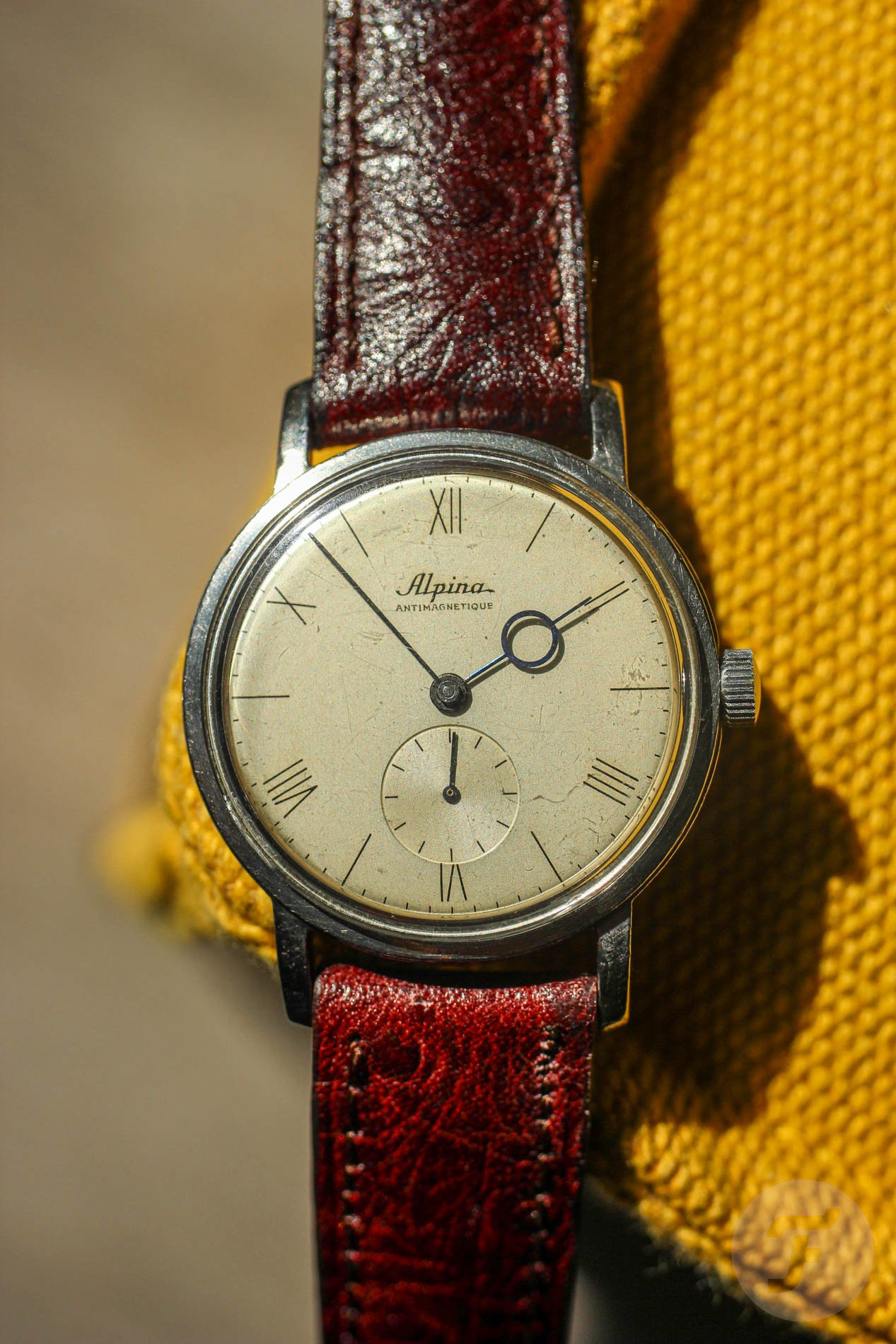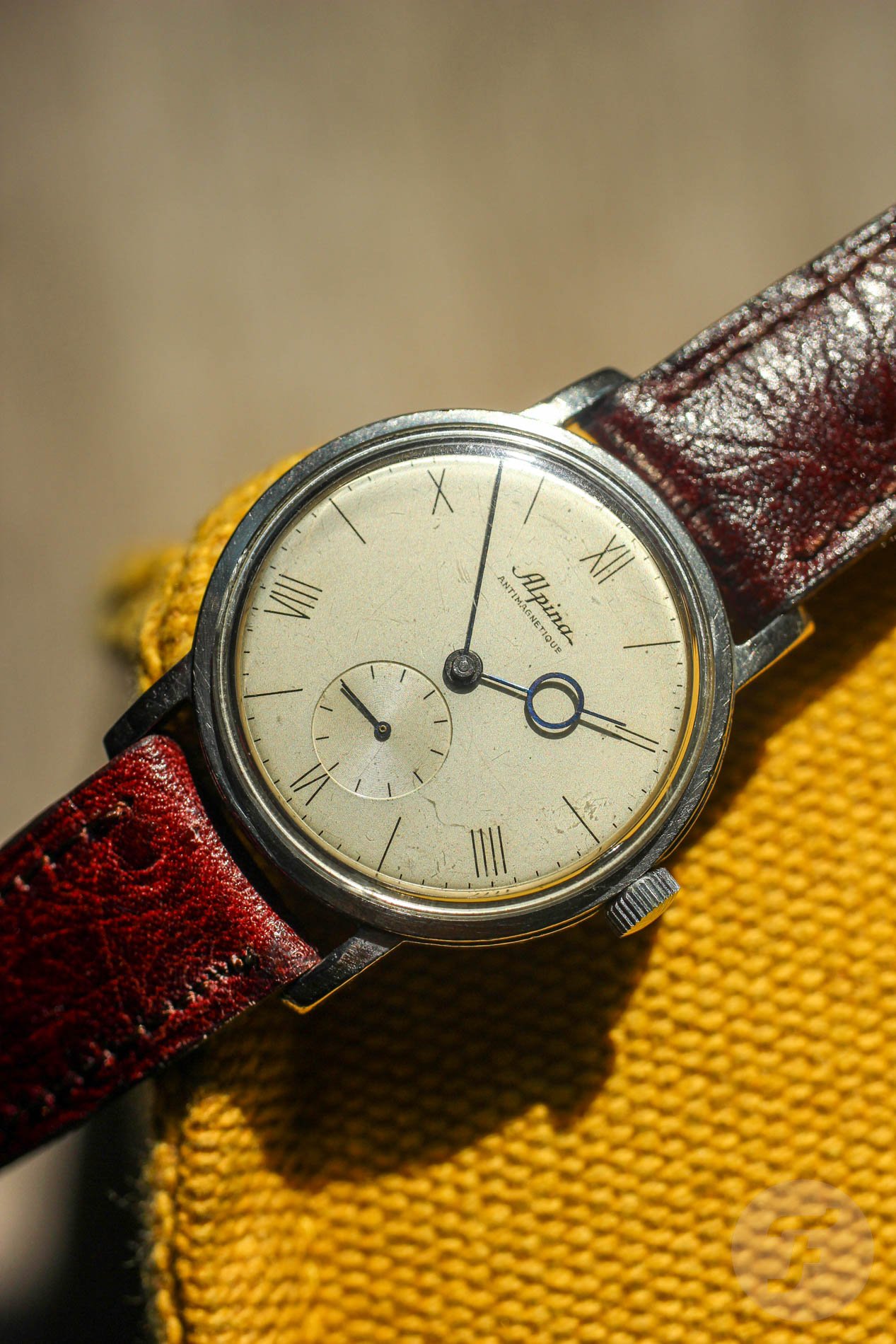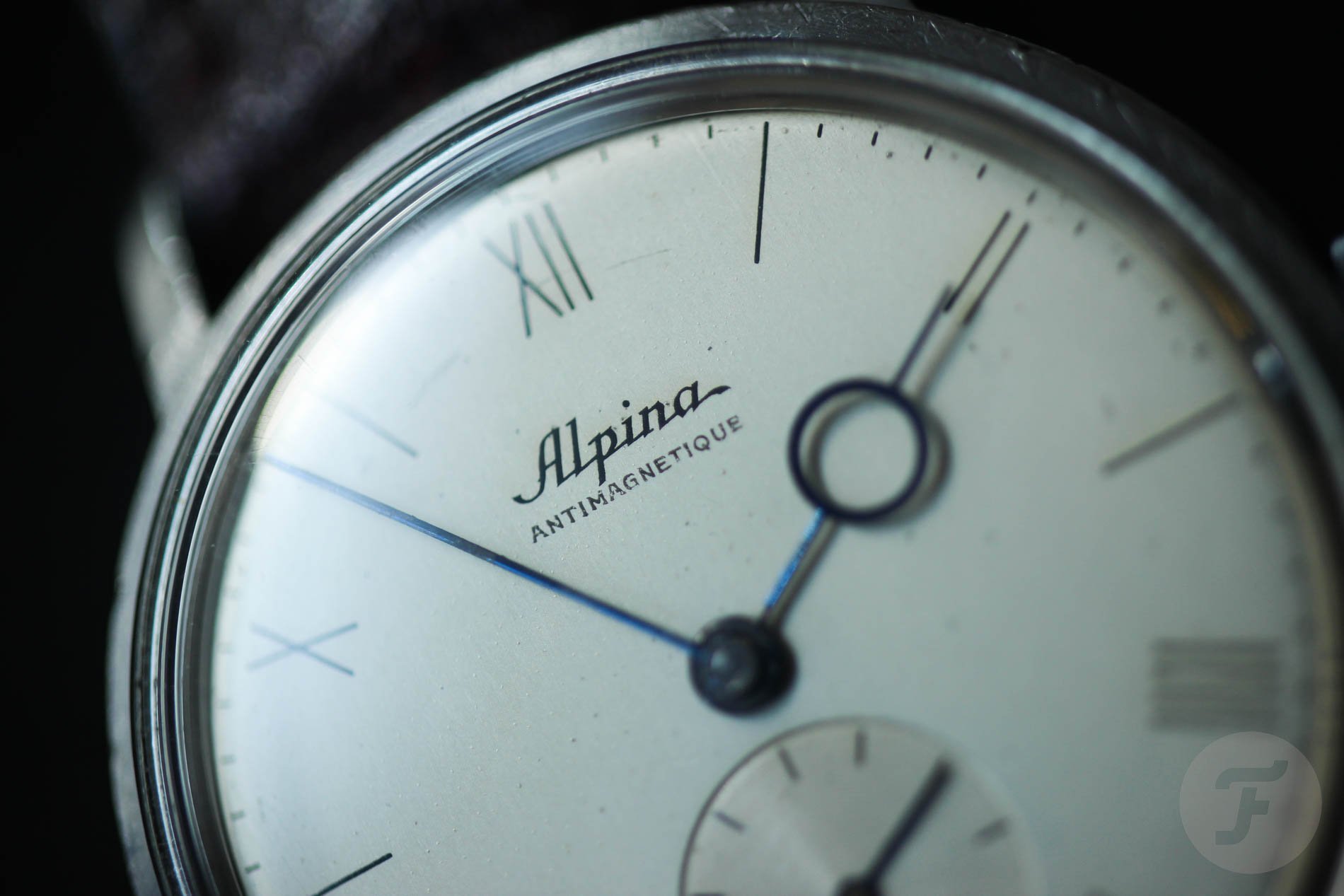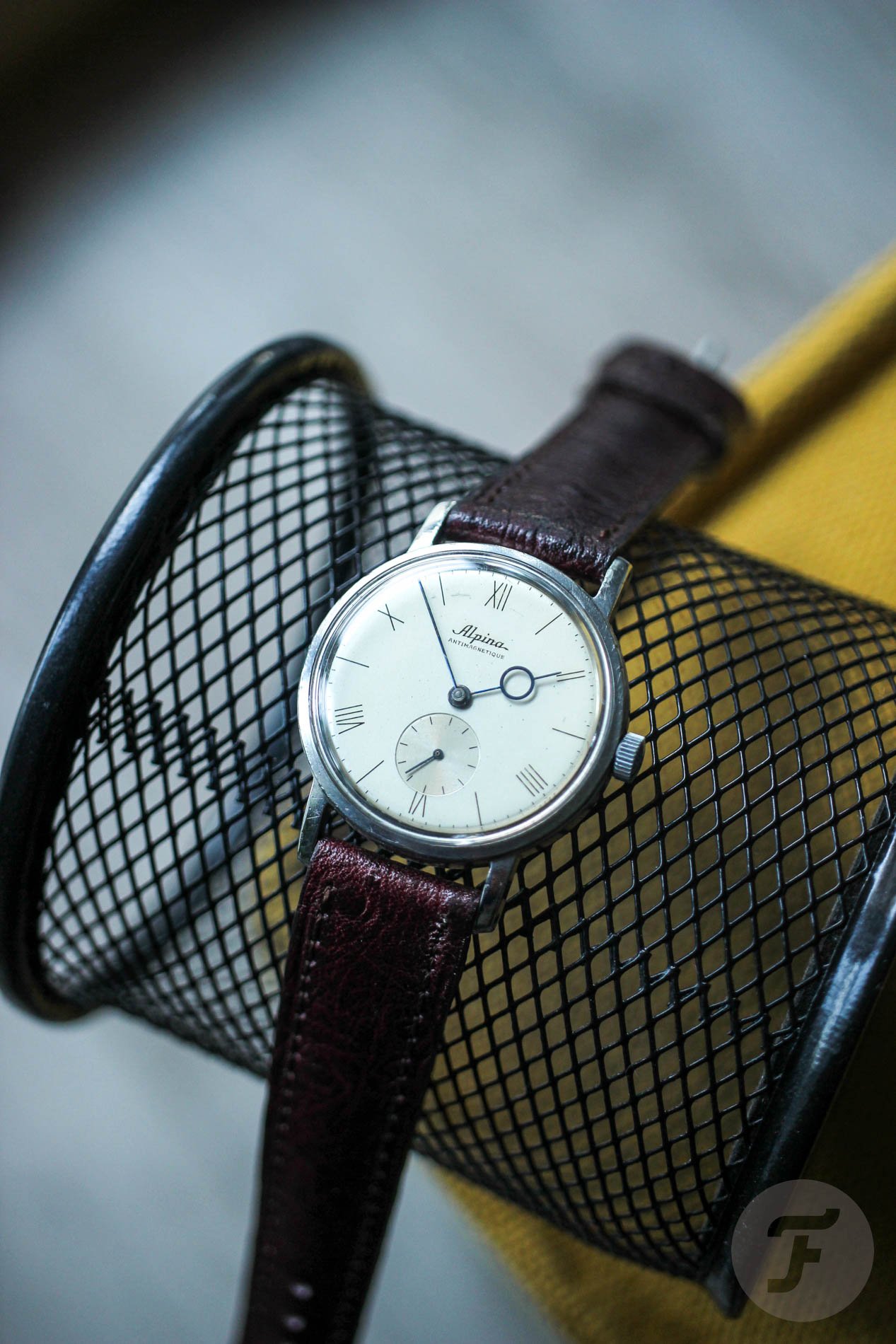#TBT Dress To Impress With A Pontife-Handed Alpina Cal. 586
It is not difficult to recognize a simple time-only watch from the 1940s. There are tons of them. They have either plain dials or dials with Arabic numerals. Not many watches from that time had hours marked with Roman numerals, and even fewer had so-called Pontife hands. And this is the first time I’ve found all this spiced up with an Alpina logo!
Alpina watches of various styles create a big chunk of my watch collection. In my early years of watch collecting, I watched the market closely and accumulated an exciting selection of shapes, styles, and movements. To mention a few, the Alpina La Ronde is not easy to come by, and neither is the Alpina President with its massive case. I can’t forget my all-original Alpina Seastrong 10, which I scored from a Swedish diving pioneer, still with its original crystal — a story worth reading! Going back on the timeline, my wife likes to sport my Alpina Rensie with a metallic-sounding bumper movement.
Alpina after Gruen
Still, I’m missing some Alpina watches. The Alpina Gruen Tecno is one of them. I mentioned it on purpose now because today’s featured Alpina has a link to the Alpina Gruen story. In the late 1930s, after Alpina divorced Gruen, the brands were doing business by themselves. Around that time, Alpina presented the “Alpina 4” sports watch. The number “4” was carefully chosen because it underlined four key quality characteristics of new Alpina watches: 1. they were antimagnetic, 2. they had watertight cases, 3. the movements featured Incabloc shock absorption, and 4. the cases were made of stainless steel.
The Alpina 586 movement
According to the Alpina 140th-anniversary book (which you can read for free here), Alpina used calibers 566 and 586 for the sporty Alpina 4. “It was available in different versions, for ladies with 8¾-ligne hand-wound movements and for gents with 10½-ligne hand-wound movements. Caliber 586 was offered with either a small subdial for the seconds or with a centrally axial ‘sweep’ seconds hand.” And the very same movement beats in my watch with its Roman-numeral dial and Pontife hands. Contrary to Alpina 4 watches, my watch doesn’t have Incabloc.
Winding the Alpina 586
There is something I love about this watch, and I always look forward to it so much — winding the Alpina 586 movement. I don’t know if it’s just my watch (probably not), but that rattling sound when turning the crown is unbelievably calming. It makes me realize what’s going on inside the case. I can literally feel the latch sliding over every single tooth. The experience is so rich; I wind it slowly, and I enjoy it to the max. It may sound funny, but with the Alpina 586, an activity I never think about because it’s merely a routine changes into something that I truly enjoy and focus all my senses on.
Ladder lugs
Most of the Alpina 4 watches come with a sporty, timeless case. Honestly, the size and shape of those cases almost feel contemporary. Well, that’s something I cannot say about this watch’s case, which is very simple and dressy. Its long, thin lugs almost look dull, not to offend anyone’s taste. When this watch arrived a few years ago, I could see nothing but a ladder when I looked at it from the top. It took some (wrist) time for me to start enjoying it for what it is.
The first time I’ve seen an Alpina like this
In general, it’s tricky to make bold statements about vintage watches, especially poorly documented ones, because you never know what will resurface tomorrow. But I can say that for all the years I’ve watched all the auction houses and auction sites, I have never seen the combination of Roman numerals and Pontife hands on an Alpina watch. The first explanation offered here is that it may be a Franken, but I believe it is not. Everything is perfectly consistent here, and it all looks original.
Dial show
The dial speaks for itself. It’s clean and airy, and everything printed on it is of perfect quality. The indexes and numerals are so slim that you just wonder how it’s possible, but they are perfectly legible anyway. Then you wonder again because you realize that the Pontife hands are almost just as thin as the hour markers. The sub-seconds register seems like it was punch pressed. My favorite feature, though, is the old-school Alpina logo, which only underlines the royal DNA of the watch.
Last thoughts
It feels good to wear exclusive vintage pieces, not for the price tag but for the fine movements, iconic designs, or particular complications they carry. This time, beauty beats a big budget, and it is utterly satisfying. Happy hunting!

